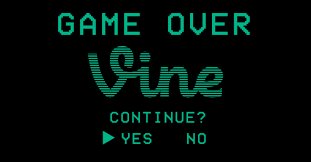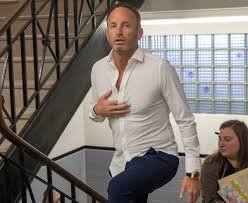
Jack Dorsey’s diVine: The Return of Vine, Championing Human-Centric Social Media
In an increasingly crowded social media landscape, where generative AI content often blurs the lines of authenticity, a new project emerges with a powerful vision: diVine. Backed by Twitter co-founder Jack Dorsey, this innovative app aims to resurrect the beloved six-second looping videos of Vine, but with a crucial, future-forward twist – a steadfast commitment to human-made content and user agency.
Launching amidst a yearning for genuine digital connection, diVine isn’t just a trip down memory lane. While it offers access to over 100,000 archived Vine videos meticulously restored from pre-shutdown backups, it also empowers users to create profiles and upload fresh, original short-form content. What truly sets diVine apart is its proactive approach to artificial intelligence: suspected generative AI content will be flagged and prevented from being posted, fostering an environment where human creativity reigns supreme.
The Visionaries Behind the Comeback: Jack Dorsey and Rabble
The creation of diVine was made possible by Jack Dorsey’s non-profit, “and Other Stuff,” established to fund experimental open-source projects and tools poised to redefine the social media paradigm. A key figure in bringing diVine to life is Evan Henshaw-Plath, known as “Rabble,” an early Twitter employee and a member of Dorsey’s non-profit.
Rabble’s journey began by exploring a backup of Vine’s content, saved by the Archive Team after Twitter announced the app’s closure in 2016. These extensive, multi-gigabyte binary files, though preserved, were largely inaccessible to the average user. Inspired by the existence of this archive, Rabble embarked on a mission to extract and reconstruct the old Vine content, envisioning it as the foundation for a new, Vine-like mobile experience. “Can we do something that takes us back… but also lets us see an era of social media where you could either have control of your algorithms, or you could choose who you follow… and where you know that it’s a real person that recorded the video?” Rabble mused, reflecting on the project’s core philosophy.
Built on Principles: Decentralization and Authenticity
Rabble dedicated months to developing big data scripts, deciphering the complex file structures, and ultimately reconstructing the Vines along with user data, views, and even a subset of original comments. While not every video from Vine’s vast history could be recovered—millions of K-pop focused videos, for instance, were never archived—diVine proudly hosts a significant portion of Vine’s most popular content, boasting approximately 150,000 to 200,000 videos from about 60,000 creators.
Central to diVine’s architecture is Nostr, a decentralized protocol highly favored by Jack Dorsey. This open-source foundation empowers developers to create a new generation of applications free from the constraints of traditional venture capital backing, potentially toxic business models, or massive engineering teams. Dorsey himself stated, “Nostr… is empowering developers to create a new generation of apps without the need for VC-backing, toxic business models or huge teams of engineers. The reason I funded the non-profit, and Other Stuff, is to allow creative engineers like Rabble to show what’s possible in this new world, by using permissionless protocols which can’t be shut down based on the whim of a corporate owner.”
To ensure the authenticity of new video uploads, diVine integrates technology from The Guardian Project, a human rights non-profit. This technology helps verify that content was genuinely recorded on a smartphone, among other crucial checks, further reinforcing diVine’s commitment to human-created media.
Empowering Creators: Ownership and Control
A significant aspect of diVine’s launch is its respect for creator rights. Vine creators still retain the copyright to their original work. They can issue DMCA takedown requests if they wish their Vines removed, or they can verify their account ownership—typically by demonstrating possession of the social media accounts originally linked in their Vine bio—to reclaim their content. Once verified, creators can not only access their old Vines but also upload new videos or restore any of their older content that the archive restoration might have missed.
The project operates under the belief that utilizing archived, creator-owned content constitutes fair use, especially given the content’s historical nature and the creator’s ongoing ownership.
diVine vs. The Rest: A Call for Genuine Connection
While Elon Musk, the current owner of X (formerly Twitter), has also hinted at bringing back Vine, no public launch has materialized. Meanwhile, the Dorsey-backed diVine project is forging ahead, betting on a strong consumer demand for a non-AI, authentic social experience. Rabble articulates this sentiment: “Companies see the AI engagement and they think that people want it. They’re confusing, like — yes, people engage with it; yes, we’re using these things — but we also want agency over our lives and over our social experiences. So I think there’s a nostalgia for the early Web 2.0 era, for the blogging era, for the era that gave us podcasting, the era that you were building communities, instead of just gaming the algorithm.”
diVine represents a refreshing counter-narrative to the prevailing AI-driven trends, offering a space where nostalgia for a simpler, more human-centric internet converges with cutting-edge decentralized technology. It’s an invitation to reconnect with the playful, spontaneous spirit of Vine, now fortified with principles of authenticity and user empowerment.
Join the diVine Experience
Ready to dive into a truly human social experience? diVine is now available on both iOS and Android. Visit diVine.video to download the app and be part of this exciting new chapter in social media.




